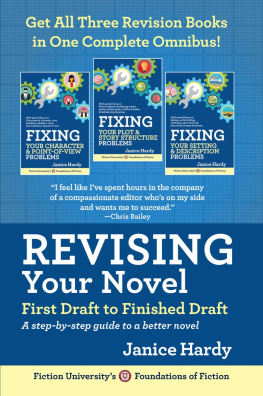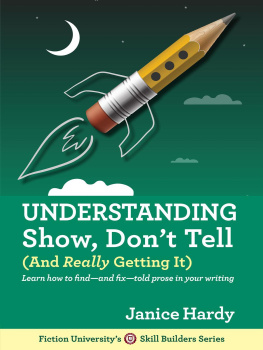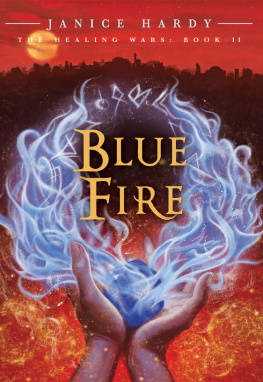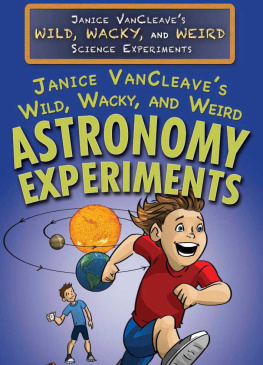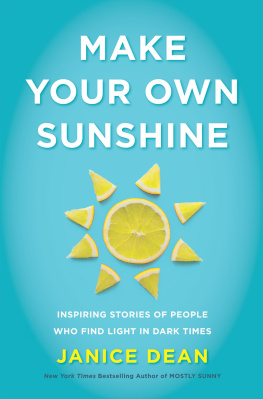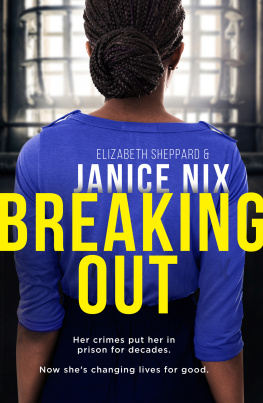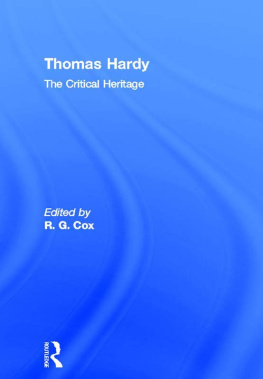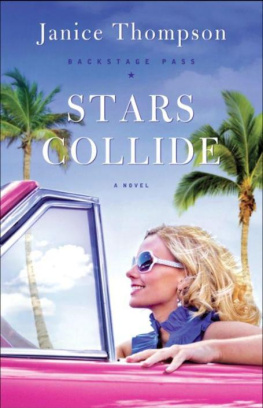Janice Hardy - Understanding Conflict: (and What It Really Means)
Here you can read online Janice Hardy - Understanding Conflict: (and What It Really Means) full text of the book (entire story) in english for free. Download pdf and epub, get meaning, cover and reviews about this ebook. year: 2017, publisher: Janice Hardy, genre: Home and family. Description of the work, (preface) as well as reviews are available. Best literature library LitArk.com created for fans of good reading and offers a wide selection of genres:
Romance novel
Science fiction
Adventure
Detective
Science
History
Home and family
Prose
Art
Politics
Computer
Non-fiction
Religion
Business
Children
Humor
Choose a favorite category and find really read worthwhile books. Enjoy immersion in the world of imagination, feel the emotions of the characters or learn something new for yourself, make an fascinating discovery.
- Book:Understanding Conflict: (and What It Really Means)
- Author:
- Publisher:Janice Hardy
- Genre:
- Year:2017
- Rating:5 / 5
- Favourites:Add to favourites
- Your mark:
- 100
- 1
- 2
- 3
- 4
- 5
Understanding Conflict: (and What It Really Means): summary, description and annotation
We offer to read an annotation, description, summary or preface (depends on what the author of the book "Understanding Conflict: (and What It Really Means)" wrote himself). If you haven't found the necessary information about the book — write in the comments, we will try to find it.
Understanding Conflict: (and What It Really Means) — read online for free the complete book (whole text) full work
Below is the text of the book, divided by pages. System saving the place of the last page read, allows you to conveniently read the book "Understanding Conflict: (and What It Really Means)" online for free, without having to search again every time where you left off. Put a bookmark, and you can go to the page where you finished reading at any time.
Font size:
Interval:
Bookmark:
Fiction University's
Skill Builders Series
Understanding Conflict
(And What It Really Means)
by
Janice Hardy
Understanding Conflict (And What It Really Means)
Copyright 2017
Janice Hardy
This book is also available in print.
All rights reserved. No part of this publication may be reproduced, stored in a retrieval system, or transmitted in any form or by any means electronic, mechanical, photocopying, recording, or otherwise without the prior written permission of the publisher and copyright owner.
Published by Fiction University Press.
ISBN 978-0-9915364-7-4
Books by Janice Hardy
Foundations of Fiction Series:
Planning Your Novel: Ideas and Structure
Planning Your Novel Workbook
Revising Your Novel: First Draft to Finished Draft
Skill Builder Series:
Understanding Show, Dont Tell (And Really Getting It)
Understanding Conflict (And What It Really Means)
Novels by Janice Hardy
The Healing Wars Trilogy:
The Shifter
Blue Fire
Darkfall
Contents
Like most writers, Ive spent countless hours creating conflict in my novels. Ive thrown exciting obstacles in my protagonists paths, Ive developed sinister antagonists to thwart my heroes, Ive devised cruel ways to put my characters through mental anguishand my beta readers have still told me, This book needs more conflict.
Because despite what we know about conflict as writers, the concept isnt so cut and dry.
Its not just about the obstacles in the path, or the bad guy with the evil plan, or the mental anguish of the hero. Its not the plot or the character arc, even though we often talk about it like it is. Its a tapestry woven from multiple aspects of writing that work together to create a feeling that victory will not come easily to the characters, and it leaves readers dying to know what the protagonist is going to do about it. Conflict can be confusing because:
- Conflict is more than one single thing.
- Conflict changes depending on who you talk to.
- Conflict changes depending on how you use it.
Conflict is a pain in the butt that makes us want to bash our heads against the keyboard on a regular basis, and even makes us want to curl up and cry in the corner. Ive been there myself, I know how frustrating it can be, and Ive put this book together to help my fellow writers avoid some of that frustration and keyboard-bashing.
Creating conflict isnt that hard once you figure out what it means and how it applies to your novel. Realizing it isnt a one-size-fits-all means youll be able to find the right conflict to suit your need, no matter what that need is. Youll learn how to parse feedback and how to diagnose your own manuscripts to spot trouble areas before they become problems.
Understanding Conflict (And What It Really Means) is an in-depth study and analysis of what conflict means and how to use it in your writing. It will help you understand the different layers of conflict and how they work together to create the problems and goals in your story, as well as explore the elements of writing that affect conflict, such as stakes and character motivations. It will discuss the common problems that result from a lack of conflict, and offer suggestions and tips on how to strengthen conflict in your story.
By the end of this book, youll have a solid understanding of what conflict is and have the ability to create strong and compelling conflicts in your own novel.
Ask any agent or editor to list the top three reasons manuscripts get rejected and you'll find "not enough conflict" on that list. Conflict is at the core of every story, and without conflict, there is no story. It's so vital, conflict and story are almost interchangeable when writers talk about it. Its common to ask, Whats your story about? and have the author describe the conflict.
Which is part of the problem.
Since conflict covers such a wide range of storytelling, it isn't always clear what people mean when they say conflict. This can cause a lot of frustrationespecially for new writers. Does it mean the plot of the story? The character arc? Does conflict mean the characters have to argue? Does it mean a physical battle? Does it mean soul-crushing angst or a mustached villain plotting against the hero at every turn?
No. Conflict fuels the plot and character arc, but theyre separate elements. You can have conflict without battles, without major angst, and without evil villains bent on world domination. Some of the best conflicts are those between characters who love each other deeply, but cant agree on what to do about a problem.
I think the biggest reason writers struggle with conflict is that its not just one thing. Conflict is a one-two combo of a challenge faced and the struggle to overcome that challenge.
- The conflict of the plot (the physical challenges faced to resolve the problem)
- The conflict of the character (the mental challenges faced to resolve the problem)
These are the two sides of conflict and they appear in every story (and scene) in some fashion. Lets look at each of them a little closer.
A plot is external. Its what the protagonist does to resolve the problem of the novel (the core conflict). The plots conflicts are also external, consisting of the individual challenges the protagonist faces on a scene-by-scene basis. Resolving these conflicts creates the plot and leads the protagonist from page one to the final page of the novel. Think of it like the to-do list for the novel. Follow this list of challenges to resolve the plot.
The conflict of the plot is whats making it physically hard for the protagonist to do what she has to do.
For example:
- To sneak into the building, the protagonist must find a way to disable the security cameras and locksthe conflict (challenge) is the technology and security people preventing her from entering the building.
- To catch the love interests eye, the protagonist must attend a party she hasnt been invited tothe conflict (challenge) is her attempt to get into that party when shes being excluded.
- To defeat the two-headed troll, the protagonist must find a way to use her physical fighting skills and wits to win over a much stronger foethe conflict (challenge) is overcoming her physical limits to best a monster that could easily squash her like a bug.
Real conflict involves opposition to a goal and the challenges to overcome that opposition.
However, when people refer to the plots conflict in a scene, its often the goal theyre talking aboutwhich is why writers can sometimes think their scene has conflict when it really doesnt. Theyre referring to what the protagonist has to do, not the challenge to achieve that goal. You might have a goal of emptying the dishwasher, but unless that task presents a challenge to complete it, its not a conflict.
For example:
- The protagonist must sneak into a building and steal the plans.
- The protagonist must ask her love interest out on a date.
- The protagonist must defeat the two-headed troll intent on eating her.
These are all goals that could easily move a plot forward, but these conflicts are just tasks to be completedtheres no challenge associated with achieving them. Without something in the way of completing these tasks, theyre nothing more than simple obstacles. The conflict (in the story sense of the word) is whats preventing the protagonist from completing her goal. Otherwise, the protagonist can just waltz in and accomplish her task with little to no resistance. No resistance (no challenge) = no conflict.
Test Your Conflict: One trick to test if you have an obstacle or a conflict is to put the scene in an if-then statement.
For example:
- If she can disable the security, then she can break into the building (protagonist vs. security).
Font size:
Interval:
Bookmark:
Similar books «Understanding Conflict: (and What It Really Means)»
Look at similar books to Understanding Conflict: (and What It Really Means). We have selected literature similar in name and meaning in the hope of providing readers with more options to find new, interesting, not yet read works.
Discussion, reviews of the book Understanding Conflict: (and What It Really Means) and just readers' own opinions. Leave your comments, write what you think about the work, its meaning or the main characters. Specify what exactly you liked and what you didn't like, and why you think so.


